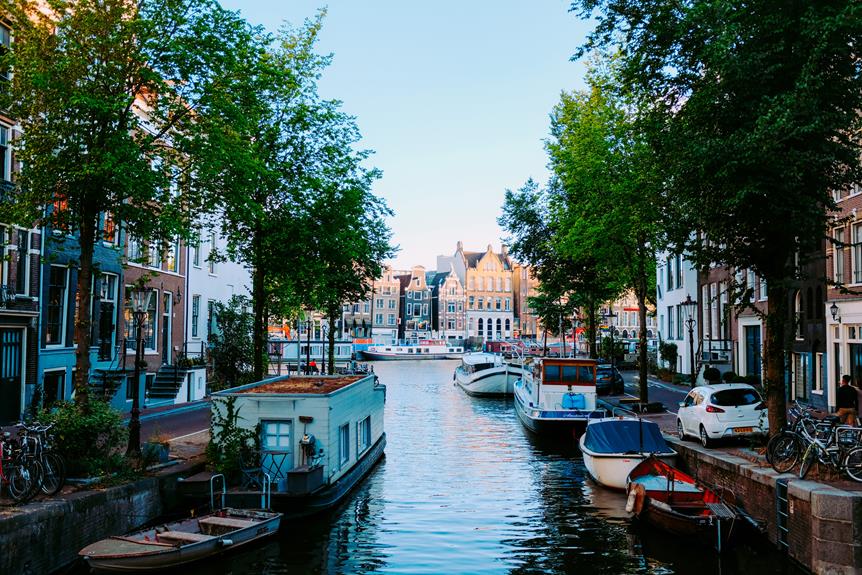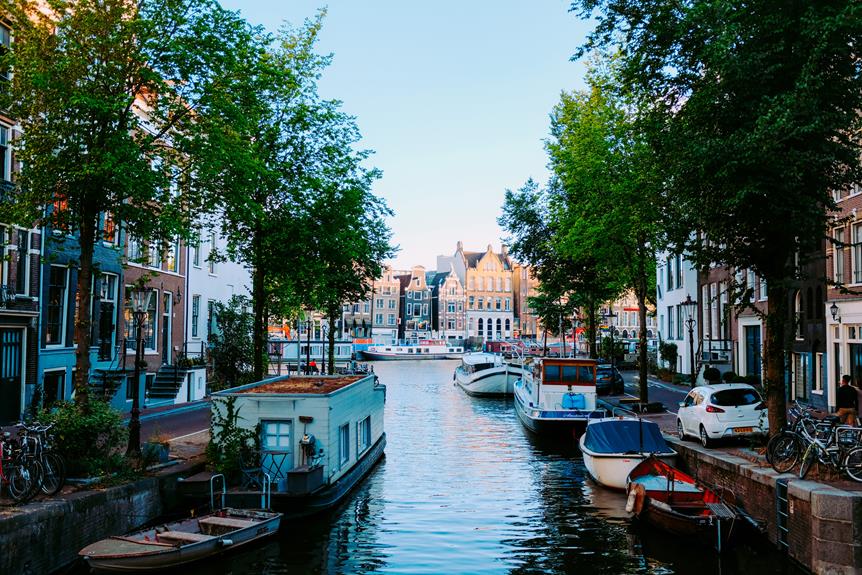Naogaon District in Bangladesh is a captivating destination that thrives on its vibrant cultural heritage and remarkable agricultural productivity. With a population of around 2.8 million, this district has witnessed steady growth and is known for its diverse religious beliefs. But Naogaon is not just about its religious diversity; it is also renowned as the "bread basket of Bangladesh" due to its extensive agricultural lands and exceptional crop cultivation. From the historic Paharpur village to the scenic Patisar area associated with Rabindranath Tagore, this district offers an array of points of interest that will surely captivate any visitor. Moreover, Naogaon District places significant emphasis on education, evident in its commendable literacy rate of 72.14%. To delve deeper into the wonders of this vibrant cultural and agricultural hub, let us explore its demographics, economy, points of interest, and more.
Demographics and Religion
Naogaon District, located in Bangladesh, is characterized by its diverse demographics and religious composition. With a population of 2,784,598, Naogaon boasts a rich tapestry of religious diversity. According to the 2022 Census of Bangladesh, Muslims constitute the majority with 86.82%, followed by Hindus at 11.45%, Christians at 0.77%, and other or not stated at 0.95%. This religious diversity is reflected in the cultural practices of the district, where various religious festivals and customs are celebrated with great enthusiasm. The district is known for its harmonious coexistence of different religious communities, each contributing to the vibrant cultural fabric of Naogaon. From the grand celebrations of Eid-ul-Fitr and Durga Puja to the serene prayers at local mosques and temples, Naogaon District showcases the beauty of religious pluralism and the rich cultural practices that thrive within its borders.
Economy
Located in Bangladesh, Naogaon District is renowned as the breadbasket of the country, making it a vital hub for agriculture and economic growth. Here are four key points about the economy of Naogaon District:
- Agricultural Development: With 80% of its land under cultivation, Naogaon District is primarily an agricultural region. The district is known for its rice production and boasts the highest number of rice processing mills in any district in Bangladesh. Other major crops grown here include mango, jute, wheat, maize, sugar cane, potatoes, pulses, oilseeds, brinjal, onions, and garlic.
- Economic Growth: The district's economy heavily relies on the agricultural sector, which employs a significant portion of the population. The abundant agricultural resources and favorable climatic conditions have contributed to the economic growth of Naogaon District, making it a key contributor to Bangladesh's overall agricultural output.
- Rice Production: Naogaon District is the top-listed district in terms of rice production. In the 2009-2010 season alone, the district produced a remarkable 1,358,432 metric tons of paddy and wheat combined.
- Potential for Growth: The district has great potential for further agricultural development and economic growth. Efforts to introduce modern farming techniques, increase productivity, and enhance value-added processing are underway, aiming to boost the district's economy and improve the livelihoods of its residents.
Points of Interest
With its rich cultural heritage and historical landmarks, Naogaon District offers a plethora of captivating points of interest that attract both locals and tourists alike. One of the notable archaeological sites in the district is Paharpur, a small village located 5 km west of Jamalganj. It is home to the Somapura Mahavihara monastery, an archaeological find covering approximately 27 acres. The monastery features a quadrangular court with 177 rooms and is influenced by South-East Asian architecture. Another fascinating site is the Kusumba Mosque, situated on the west bank of the Atrai River in Manda Upazila. Built during the period of Afghan rule in Bengal, the mosque showcases Bengal style architecture. Additionally, Naogaon is home to the Jagaddala Mahavihara, a Buddhist monastery and seat of learning in Varendra, founded by the later kings of the Pāla dynasty. This site has been tentatively listed as a UNESCO World Heritage Site. Lastly, Patisar, associated with Rabindranath Tagore, is situated on the banks of the river Nagor. Tagore purchased the zamindari in 1830 and composed various poems, stories, and novels during his stay. This location also played a significant role in introducing tractors and forming cooperative societies for agriculture. Naogaon District's points of interest showcase its rich cultural heritage and offer visitors a glimpse into its historical significance.
Education
The educational landscape of Naogaon District encompasses a range of institutions and initiatives that contribute to the development of a knowledgeable and skilled population. Here are four key aspects of education in the district:
- Primary schools established by Rabindranath Tagore: These schools were founded by the renowned poet and Nobel laureate, Rabindranath Tagore, to provide education to children in rural areas. They have played a crucial role in promoting literacy and empowering the local community.
- Rathindranath High School: This esteemed educational institution has been instrumental in imparting quality education to students in Naogaon District. It has a strong reputation for academic excellence and has produced many successful individuals who have contributed to the development of the district.
- Charitable dispensaries: Along with educational institutions, Naogaon District also boasts charitable dispensaries that provide healthcare services to the rural population. These dispensaries play a vital role in ensuring the overall well-being of the community.
- Patisar Krishi Bank: Established in 1905, this agricultural bank has been instrumental in promoting rural development in Naogaon District. It offers financial services and support to farmers, enabling them to enhance their agricultural practices and improve their livelihoods.
These educational institutions and initiatives are integral to the development of Naogaon District, fostering knowledge, skills, and rural development.
Agriculture
Education plays a vital role in empowering individuals and fostering development, but it is agriculture that truly drives the economic prosperity and sustenance of Naogaon District in Bangladesh. With its fertile land and favorable climate, Naogaon is known as the breadbasket of the country. The district boasts a diverse range of crops, including paddy, mango, jute, wheat, maize, sugar cane, potatoes, pulses, oil seeds, brinjal, onions, and garlic. In fact, Naogaon has the highest number of rice processing mills in any district, making it the top producer of rice in the country. In 2009-2010 alone, the district produced a staggering 13,58,432 metric tons of paddy and wheat. This success can be attributed to the adoption of modern agricultural practices, such as the use of high-yielding varieties, improved irrigation techniques, and the application of fertilizers and pesticides. The agricultural sector in Naogaon District is a testament to the hard work and dedication of the farmers, who continue to contribute to the district's vibrant economy and cultural heritage.
| Crop | Production (Metric Tons) |
|---|---|
| Paddy | 9,50,000 |
| Mango | 1,50,000 |
| Jute | 1,00,000 |
| Wheat | 75,000 |
Historical Population
The population of Naogaon District has undergone significant changes over the years, reflecting the region's cultural and agricultural development. Here are some key points about the historical population of Naogaon:
- Population growth: The population has steadily increased over the years. In 1974, the district had a population of 1,424,082, which grew to 2,600,157 in 2011. As of 2022, the population stands at 2,784,598.
- Religious diversity: Naogaon District is known for its religious diversity. According to the 2022 Census of Bangladesh, Muslims make up the majority of the population at 86.82%, followed by Hindus at 11.45%, Christians at 0.77%, and others or not stated at 0.95%.
- Islam and Hinduism: The religious composition of the district has undergone changes over the years. In 1941, Islam accounted for 69.81% of the population, while Hinduism was at 23.43%. However, by 2011, the percentage of Muslims had increased to 86.55%, while Hinduism decreased to 11.08%.
- Ethnic minorities: Naogaon District is home to a significant number of ethnic minorities, comprising 3.85% of the population. This makes it the largest ethnic minority population in Bangladesh outside the Chittagong Hill Tracts.
The population dynamics and religious diversity of Naogaon District illustrate the region's vibrant and evolving cultural landscape.
Ethnic Minorities
With a vibrant population and a rich cultural heritage, Naogaon District also stands out for its diverse ethnic minority communities. The district is home to a significant number of ethnic minorities, contributing to the cultural integration and socio-economic development of the region. These ethnic minority groups add to the diversity of the district, enriching its cultural fabric. While the majority of the population in Naogaon District is Muslim, there are also Hindu, Christian, and other minority communities present. These diverse communities bring their unique traditions, languages, and customs, creating a tapestry of cultural diversity. The presence of ethnic minorities in Naogaon District plays a vital role in fostering social harmony and promoting inclusive development in the region.
Literacy Rate
Naogaon District boasts a commendable literacy rate, reflecting the commitment to education and intellectual growth in the region. The district has made significant strides in improving its education system, thanks to various government initiatives. Here are four key factors contributing to Naogaon's impressive literacy rate:
- Accessible Education: The government has prioritized the establishment of primary schools in the district, providing accessible education to children. This has allowed more students to receive a basic education and improve their literacy skills.
- Quality Schools: Rathindranath High School is one of the prominent educational institutions in Naogaon District. It offers a quality education and has contributed to the overall literacy rate in the region.
- Charitable Support: Charitable dispensaries in Naogaon provide healthcare services and educational support to the community. These initiatives play a crucial role in promoting education and literacy among the local population.
- Government Initiatives: Patisar Krishi Bank, established in 1905, has been instrumental in providing financial support to the agricultural community. This support enables farmers to invest in education and improve the literacy rate in the district.
The combination of accessible education, quality schools, charitable support, and government initiatives has contributed to Naogaon District's commendable literacy rate. The commitment to education and intellectual growth in the region continues to shape a brighter future for its residents.
Rice Production
Located in Bangladesh, Naogaon District is renowned for its thriving rice production industry. With the highest number of rice processing mills in any district, Naogaon is considered the top district in terms of rice production. The district's fertile land and favorable climate contribute to its success in cultivating rice. However, the agricultural diversity of Naogaon goes beyond rice. Farmers in the district also grow crops such as mango, jute, wheat, maize, sugar cane, potatoes, pulses, oil seeds, brinjal, onions, and garlic. This crop diversity not only ensures food security but also contributes to the district's economic growth. The total production of paddy and wheat in 2009-2010 alone reached an impressive 1,358,432 metric tons, highlighting Naogaon's significance in the agricultural sector.
Frequently Asked Questions
What Is the Main Occupation of the People in Naogaon District?
The main occupation of the people in Naogaon District is agriculture, as it is considered the breadbasket of Bangladesh. The majority of the population in the district are farmers, and the area is predominantly under cultivation. The district is known for its production of various crops such as paddy, mango, jute, wheat, maize, sugar cane, potatoes, pulses, oil seeds, brinjal, onions, and garlic. These economic activities contribute significantly to the livelihoods and economy of the district.
Are There Any Historical Sites or Landmarks in Naogaon District?
Naogaon District in Bangladesh boasts a rich cultural heritage with a plethora of historical landmarks. These sites offer a glimpse into the region's past and showcase its architectural and artistic prowess. From the magnificent Somapura Mahavihara monastery in Paharpur, influenced by South-East Asian architecture, to the Kusumba Mosque, built during the Afghan rule in Bengal, and the Jagaddala Mahavihara, a Buddhist monastery and seat of learning, Naogaon District is a treasure trove of historical and cultural gems. These landmarks serve as a testament to the district's vibrant history and cultural significance.
What Is the Literacy Rate in Naogaon District?
The literacy rate in Naogaon District is 72.14%. The district has a well-established education system, with primary schools that were established by Rabindranath Tagore and institutions like Rathindranath High School. Additionally, there are charitable dispensaries and Patisar Krishi Bank, which was founded in 1905. The district's focus on education contributes to its overall development and empowers its population with knowledge and skills.
Which Religion Has Seen the Highest Increase in Naogaon District From 1941 to 2011?
From 1941 to 2011, Naogaon District in Bangladesh witnessed significant changes in religious demographics. The religion that experienced the highest increase during this period was Islam, which grew from 69.81% to 86.55%. This rise in Islamic followers can be attributed to various factors, including urbanization and the impact it had on religious practices. As the district experienced growth and development, it influenced the religious landscape, leading to an increase in religious diversity and the dominance of Islam.
What Is the Significance of Paharpur in Naogaon District?
Paharpur holds significant cultural and historical importance in Naogaon District. It is home to the Somapura Mahavihara monastery, an archaeological site spread over 27 acres. The monastery features a quadrangular court with 177 rooms, showcasing influences from South-East Asian architecture. Paharpur's significance lies in its preservation of cultural heritage, attracting visitors and scholars alike. This archaeological gem serves as a testament to the rich history and architectural prowess of the region, contributing to the overall cultural landscape of Naogaon District.





